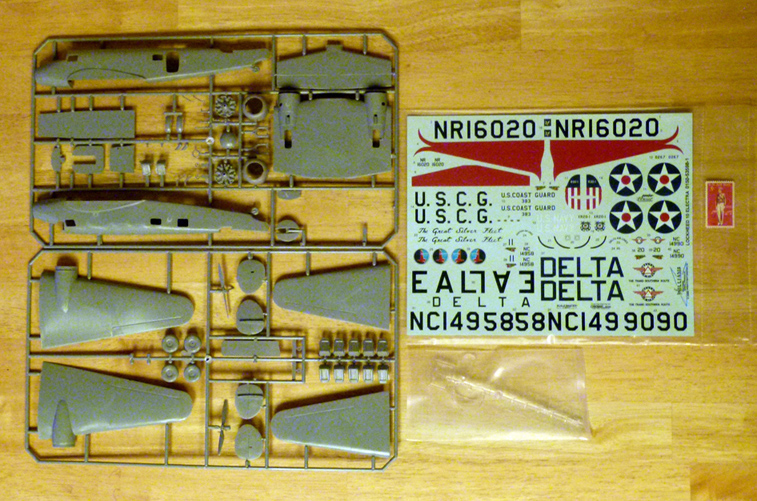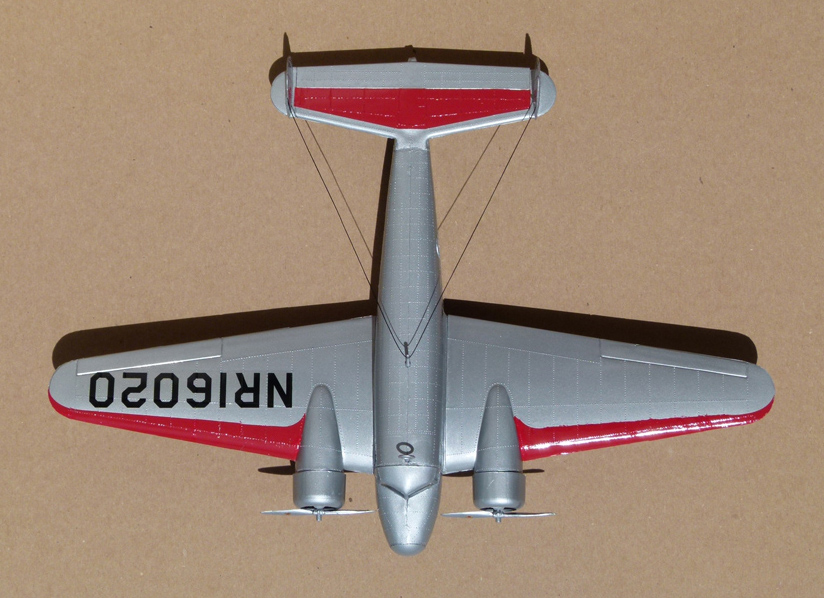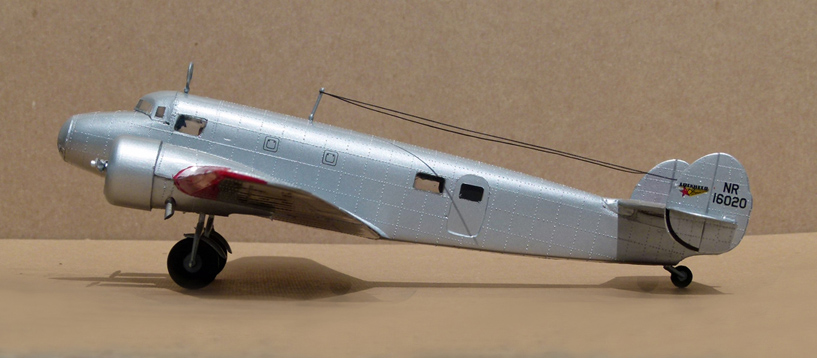



Amelia Mary Earhart was an American aviation pioneer and author. She was the first female aviator to fly solo across the Atlantic Ocean receiving the U.S. Distinguished Flying Cross for this accomplishment. She set many other records, wrote best-selling books about her flying experiences and was instrumental in the formation of The Ninety-Nines, an organization for female pilots. Earhart joined the faculty of the Purdue University aviation department in 1935 as a visiting faculty member to counsel women on careers and help inspire others with her love for aviation. She was also a member of the National Woman's Party, and an early supporter of the Equal Rights Amendment.
In 1937, Earhart was attempting to circumnavigate the globe by flying westward from Oakland, California. That attempt ended after Earhart’s Purdue-funded Lockheed Electra 10-E ground-looped on take-off from Luke Field on Ford Island, Hawaii. The Electra was subsequently shipped back to Lockheed in Burbank, California for repairs.
For Earhart's second attempt in 1937, she decided to fly eastward instead of westward again leaving from Oakland. Earhart and her navigator Fred Noonan departed Miami on June 1st and after numerous stops in South America, Africa, the Indian subcontinent and Southeast Asia, arrived at Lae, New Guinea, on June 29, 1937. At this stage about 22,000 miles (35,000 km) of the journey had been completed. The remaining 7,000 miles (11,000 km) would be over the Pacific. After departing Lae, Earhart’s airplane disappeared over the central Pacific Ocean before reaching the intended next stop on tiny Howland Island.

The fact that no trace of Earhart’s airplane was ever found even after massive searches by civilian and naval aircraft and ships has sparked many theories and stories as to what happened. These include:
• Her airplane ran out of fuel after she failed to locate Howland Island, ditched and sank leaving no debris.
• Earhart and Noonan crash landed on another island (possibly Saipan), survived and were taken captive and executed by the Japanese.
• Earhart was captured, taken to Japan and forced to make propaganda broadcasts as one of several women nicknamed Tokyo Rose.
• Earhart and Noonan survived on an island as castaways for an unknown period of time.
• Earhart survived the world flight, moved to New Jersey, changed her name, remarried and became Irene Craigmile Bolam.
• Earhart’s flight included a spy mission at the request of President Roosevelt.
• Amelia Earhart's plane was found on Aslito Airfield, Saipan on June 18, 1944 by U.S. Marines.
Because Earhart’s last radio transmission received mentioned she had 30 minutes of fuel left, the ‘crash and sink’ theory is the most plausible to me. Over the years however, witnesses (Australian, Japanese and Pacific Islanders) have claimed they saw the lost Electra or Earhart and Noonan either alive, as prisoners or executed by the Japanese.
While the aircraft and ships lost in the Bermuda Triangle and the disappearance of Malaysia Airlines Flight 370 on March 8th 2014 are intriguing mysteries, the fascination with Earhart’s disappearance continues to this day over 79 years after it happened. There are still plans to search wide areas of the sea floor using modern submersibles and other devices. Maybe someday, Earhart’s famous Electra 10-E will be discovered and the mystery will be solved.
Lockheed Electra 10-E:
The Electra 10 was designed by Hall Hibbard for Lockheed Aircraft Corporation in 1934 as the first all metal production aircraft that was intended to compete in the airliner market. Flown by Jimmy Doolittle, this impressive aircraft broke the speed record from Chicago to New Orleans by over two hours. The sweet flying, advanced aircraft was considered the foothold aircraft that boosted Delta as an airline.
The Electra 10-E was the last production variant, of which only fifteen were produced. Of those, five were used by the U.S. military as the UC-36B, and one was specially modified for Earhart’s attempt to fly around the world. The biggest modification was the addition of extra fuel tanks holding enough fuel for over 20 hours of flight at normal cruise and the addition of special radio and navigation equipment. Earhart called the aircraft a “flying laboratory”.
Facts and General Characteristics of Earhart’s Electra 10-E:
Manufacturer: Lockheed Aircraft Corp., Burbank, California
Designer: Hall Hibbard
Crew: Two
Fuel Capacity: 1,150 gallons
Length: 38 ft. 7 in. (11.8 m)
Wingspan: 55 ft. 0 in. (16.8 m)
Height: 10 ft. 1 in. (3.1 m)
Weight Empty: 7,340 lbs. (3,329.4 kg), Weight Gross: 10,500 lbs. (4,762.7 kg)
Powerplant: 2 × Pratt & Whitney R-985 Wasp S3 H 1, 550 hp (410 kW) each
Maximum speed: 202 mph (325 km/h)*
Cruise speed: 190 mph (306 km/h)*
Range: 713 mi (1,150 km)*
Service ceiling: 19,400 ft (5,910 m)*
*unmodified Model 10 characteristics
Facts and General Characteristics of the Model:
This is the only plastic model kit of Emelia Earhart’s Lockheed Electra 10-E available. It is in the rather unusual scale of 1/53. All of my other airplane models are in 1/48 scale but the difference is minimal. Besides Earhart’s Electra, the kit allows one to build other versions of the Electra: U.S. Navy, U.S. Coast Guard, Delta Air Lines and Eastern Air Lines, so there is a large sheet of different version decals. The kit also comes with a U.S. Air Mail 8¢ stamp commemorating Earhart and her Electra issued in 1963, and a copy of Earhart’s CAA (pre-FAA) Aircraft Registration document. Compared to other kits in the same price range, it had more flashing and ill-fitting pieces than most and on close inspection, the problem areas are easy to spot. Overall, I think it’s a nice looking model and a very close representation of the actual Electra.
Manufacturer: Williams Brothers Model Products, Division of Brett Industries, Inc.
Scale: 1/53
Wingspan: 12.3"
Length: 8.6"
Height: 2.7"
Hours to build and paint: 15.0





